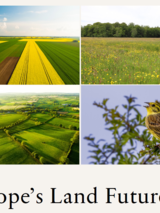Bioenergy
Abstract
After agriculture, wood harvest is the human activity that has most reduced the storage of carbon in vegetation and soils1,2. Although felled wood releases carbon to the atmosphere in various steps, the fact that growing trees absorb carbon has led to different carbon-accounting approaches for wood use, producing widely varying estimates of carbon costs. Many approaches give the impression of low, zero or even negative greenhouse gas emissions from wood harvests because, in different ways, they offset carbon losses from new harvests with carbon sequestration from growth of broad forest areas3,4. Attributing this sequestration to new harvests is inappropriate because this other forest growth would occur regardless of new harvests and typically results from agricultural abandonment, recovery from previous harvests and climate change itself. Nevertheless some papers count gross emissions annually, which assigns no value to the capacity of newly harvested forests to regrow and approach the carbon stocks of unharvested forests. Here we present results of a new model that uses time discounting to estimate the present and future carbon costs of global wood harvests under different scenarios. We find that forest harvests between 2010 and 2050 will probably have annualized carbon costs of 3.5–4.2 Gt CO2e yr−1, which approach common estimates of annual emissions from land-use change due to agricultural expansion. Our study suggests an underappreciated option to address climate change by reducing these costs.

Abstract
The Netherlands is considering whether to reform its policies of burning forest biomass under the claim that it is low carbon or carbon neutral. A recent report by the Netherlands Environmental Assessment Agency recommended that the Netherlands continue to rely on wood so long as it is of pulp-quality, which typically means logs the length of a long truck and up to around 9 inches in diameter. The report's major argument is that this quality of wood is in effect carbon free because it could be diverted to wood pellets for energy use but would not be replaced by harvesting additional wood. It is supposed to be carbon-free in the way that one person's use of a gallon of gas would be free if that meant another person used one gallon less.
However, pulp-qualiity wood is the wood used for all paper products, cardboard and contributes to particle boards used for furniture. The world's demand for pulpwood grew 68% between 1997 and 2017 and will continue to grow. In addition, although the U.S. produces 25% of the world's pulpwood, if all that pulpwood were turned into wood pellets for Europe, it would supply only 1.6% of Europe's energy demand, just 1/9 of the renewable energy European law requires to be added between 2017 and 2030. The Netherlands report in effect assumes that if Europe burns this wood, Americans will stop using toilet paper, cardboard boxes and composite furniture.
You can see these comments by me, William Moomaw, Mary Booth and Michael Norton to an advisory committee considering the issue.
Abstract
Abstract
The European Commission has agreed to a renewable energy directive (RED), which will require that all countries in the European Union increase the percentage of energy that comes from renewable energy by 2030. Although this general regulation is admirable, it treats nearly all bioenergy as fully qualifying, low-carbon, renewable bioenergy including the harvest of wood from forests deliberately to burn.
In January 2018, roughly 800 scientists wrote to the European Parliament warning them that doing so would likely lead to forms of bioenergy that actually increased carbon in the atmosphere for decades compared even to using fossil fuels. This letter along with a video about the issue and other materials can be found at www.empowerplants.com. The letter encouraged the Parliament to limit this qualifying renewable energy from forest biomass to residues and wastes, but the Parliament rejected such an amendment. Eventually, negotiations with the European Commission and Council of States led to an agreed RED that also allows cutting down and burning of whole trees.
This article provides an academic treatment of this issue and finds that the RED could plausibly lead Europe to burn an additional amount of wood equal to all its present wood harvest and increase greenhouse gas emissions from energy use by 10% compared to the alternative. It discusses why the so-called sustainability criteria do not prevent this result.
Abstract
For many years, governments and researchers have debated whether corn and wheat ethanol reduce greenhouse gas emissions when counting the emissions from land use change needed to replace the food, and the debates have relied on different global agriculture and land use models. Ultimately, the U.S. Environmental Protection Agency and the California Air Resources Board found that these ethanols did generate modestly fewer emissions than gasoline, relying on different models. The European Commission also commissioned a model that found lower emissions. Meanwhile, many supporters of biofuels argue that because all these models differ in their results, impacts on both greenhouse gases and food are too uncertain to reflect in policies.
In this paper, we analyzed the model results carefully and found that they estimate lower emissions for ethanol because they estimate that from 20-50% of the calories in food are not replaced. Physically, the emissions result from reduced respiration of carbon dioxide (and wastes) by people and livestock. The models attribute these "savings" to the biofuels. And if these estimates were wrong, the models would estimate higher greenhouse gas emissions. The paper therefore highlights that much of the debate between models is which adverse effects predominate not whether these ethanols generate adverse effects.
Those without subscriptions to the journal can gain free access to the paper through these links.
Summary: http://www.sciencemag.org/cgi/content/summary/347/6229/1420?ijkey=3HDvP4VYvLiK2&keytype=ref&siteid=sci
Reprint: http://www.sciencemag.org/cgi/rapidpdf/347/6229/1420?ijkey=3HDvP4VYvLiK2&keytype=ref&siteid=sci
Full Text: http://www.sciencemag.org/cgi/content/full/347/6229/1420?ijkey=3HDvP4VYvLiK2&keytype=ref&siteid=sci

